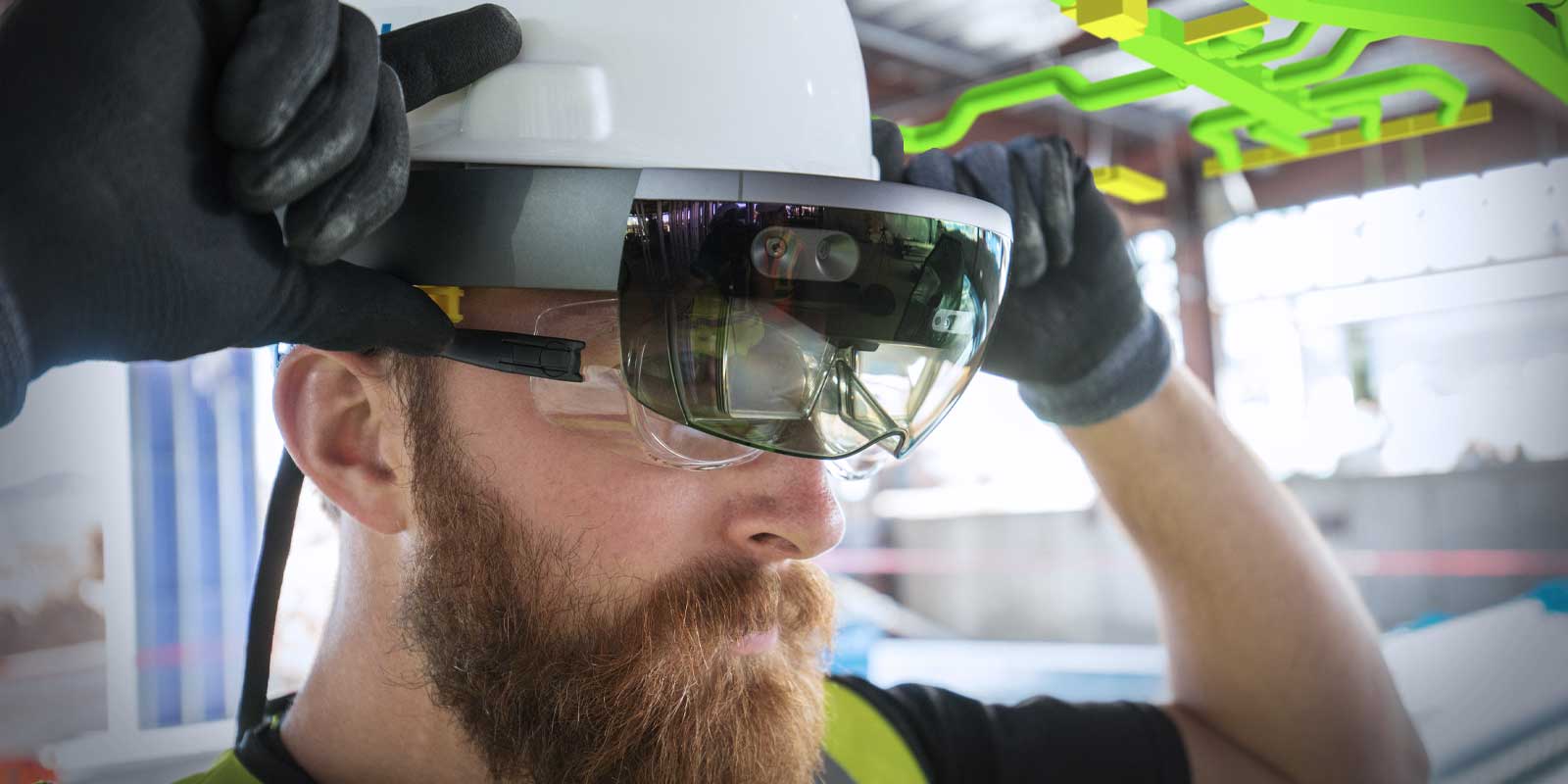How can Mixed Reality be Used in Construction?

How can Mixed Reality be Used in Construction?
One of the biggest tipping points in the construction industry is the use of mixed reality. Combining the physical realm with virtual elements opens up a whole host of opportunities for more efficient, streamlined and less error-prone projects.

Mixed reality combines physical and virtual
As the name suggests, mixed reality (MR) is a mixture of digital and real-life elements. It’s often confused with virtual reality (VR), an entirely fabricated digital world, or augmented reality (AR), which expands and supplements the physical realm with virtual elements such as data. Mixed reality, however, is a hybrid of the digital and physical, where the two coexist and interact dynamically with each other.
“Pokémon GO was a simple example of mixed reality,” explains Trimble’s Technology Director Kim Nyberg. “You have a real-life environment where virtual characters roam. When it comes to construction, the principle is the same. You can, for example, have a real-world space where you insert digital beams that behave exactly like physical beams, except that they are far easier to move around and modify.”
Mixed reality facilitates construction workflows
Using mixed reality streamlines construction workflows in many ways. “When working with virtual models, we don’t lose information,” says Nyberg. “At the moment, we use different tools and applications at each stage of the workflow, and there’s a potential data gap at every transition. We create highly detailed 3D models, only to change them to 2D for the construction site, and then work on the intended 3D building based on the simplification.” Using mixed reality keeps the level of understandability the same throughout the project.
When working with physical structures, the ability to test with digital versions is a massive benefit. Testing can be done in the field so errors can be spotted before assembly, for example, when making on-site changes. Because MR gives a real 3D experience that illustrates size, dimensions and proportions, it’s far more reliable than 3D models on a flatscreen. The precision that can be achieved with MR is extraordinary because it completely emulates real-life scenarios. It also makes remote collaboration in earlier project stages smooth and reliable.
MR tools are becoming increasingly common
A common way of working with MR is using headsets. The technology is continuously developing and its usability improving. HoloLens technology is being integrated into hard hats, making working with MR more intuitive. “MR technologies are getting less cumbersome all the time,” Nyberg explains. “In the future, we will have even more lightweight products. But even now you already have all the information you need without having to carry around a laptop or any other external device.”
Without the limitations of flatscreens, clumsy hardware and scattered information, mixed reality can make construction projects significantly better overall. “A lot will change in the next few years. The threshold of adopting new digital tools will become lower once people try out MR and understand its potential for construction,” Nyberg concludes.